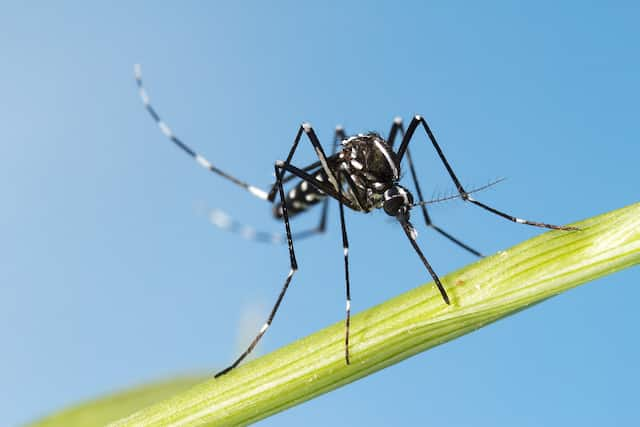Also referred to as Aedes albopictus or forest day mosquito, this is a non-native species of mosquito that is spreading rapidly across the United States and southern Canada. It is native in subtropical and tropical regions of Southeast Asia. This specie of mosquito was first discovered in 1997 in Northern Virginia. It is easily distinguished from the other species because of the silvery-white bands on its thorax and legs. It is known as a tiger mosquito because it has a striped appearance like a tiger. Just like other types of mosquitoes, the Asian tiger mosquito lays its eggs in water but it only requires a % inch depth for it to complete its life cycle. The larvae only take 10 days to change into a pupa, which is also referred to as the resting stage. The adult mosquito is then born two days later. This type of mosquito lays its eggs in anything which collects water like flowerpots, rain gutters, buckets, birdbaths or old soda cans. Their eggs can also overwinter, which means that they remain in the water when it is too cold to hatch and continue the lifecycle in the spring.
This specie of mosquito feed at night and during the day particularly in the late afternoon and very early in the morning. The young mosquitoes and the males are vegetarian and consume plant matter. Female mosquitoes drink blood from wild and domestic mammals, humans, reptiles, birds and amphibians. They are attracted to carbon dioxide. Just like other types of mosquitoes, they feed by inserting their proboscis (needle-like mouthpart) into the skin of the host.
This specie of mosquito is considered a dangerous disease carrier and great pests. It is of little use to humans but it is food to some animals. They are associated with diseases such as dog heartworm and encephalitis, yellow fever virus, Chikungunya fever, dengue fever and West Nile virus.

